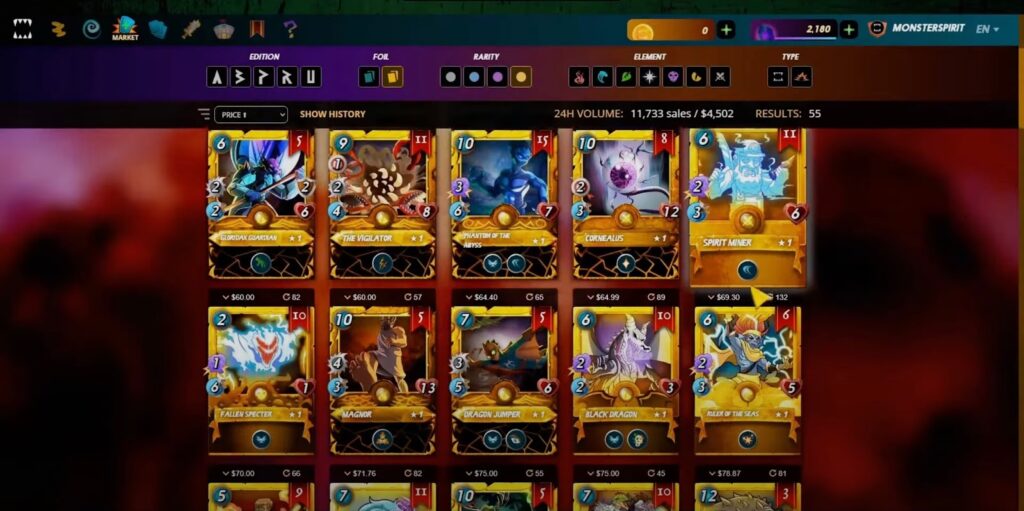The world of gaming has seen a remarkable evolution with the rise of blockchain technology, enabling new forms of gameplay and economic opportunities. One such innovation is Splinterlands, a metaverse trading card game that has captured the attention of players worldwide. Offering a unique blend of strategy, collectability, and real-world value, Splinterlands has redefined the gaming landscape. In this article, we delve into the intricacies of Splinterlands, exploring its gameplay, economic ecosystem, and the potential it holds for players seeking both entertainment and financial rewards.
The Genesis of Splinterlands
A New Era in Gaming
Splinterlands represents a paradigm shift in the gaming industry, leveraging blockchain technology to create a decentralized gaming experience. Launched in 2018 by Matthew Rosen and Jesse Reich, Splinterlands introduced a novel concept that combined traditional trading card games with the power of non-fungible tokens (NFTs) and cryptocurrency. With an initial funding of $3.6 million, the game set out to redefine how players interacted with digital assets within a gaming environment.
The Gameplay Experience
At its core, Splinterlands offers players the opportunity to own NFT digital cards which they can utilize in battles against other players. The game operates on the Hive blockchain, utilizing the native token SPS and the in-game currency DEC. What sets Splinterlands apart is its accessibility, with a low entry barrier requiring only $10 for a spellbook, allowing players to quickly immerse themselves in the game’s universe. The fast-paced battles are designed to consume minimal time, making it an ideal choice for both casual and competitive gamers.
Earning Potential and Community Engagement
One of the most compelling aspects of Splinterlands is the potential for players to earn real money while enjoying the game. Amateurs and novices have the opportunity to acquire new cards and tokens by completing quests, participating in ranked matches, or joining tournaments. Additionally, the game fosters an active community where players can engage in trading digital cards on a secondary market and convert them into cryptocurrency, further enhancing the economic dimension of the gaming experience.
| Feature | Description |
|---|---|
| Blockchain | Utilizes Hive blockchain technology for decentralized gameplay. |
| Entry Barrier | Low entry cost of $10 for a spellbook, ensuring accessibility for all players. |
| In-Game Currency | Uses the native token SPS and the in-game currency DEC for transactions and rewards. |
| Card Variety | Boasts over 500 cards and 64 abilities released, offering diverse gameplay options. |
| Earning Potential | Allows players to earn new cards and tokens through quests, ranked matches, and tournaments. |
The Splinterlands Universe Unveiled
Diverse Card Collection
Splinterlands boasts an extensive collection of over 500 cards, each possessing unique attributes and abilities. These cards span various rarities, from common to legendary, providing players with a wide array of strategic options when assembling their battle decks. The constant development and expansion of the game ensure that players are continually presented with new cards and abilities, adding depth and excitement to the gameplay experience.
Strategic Depth and Dynamic Battles
The heart of Splinterlands lies in its fast-paced and strategic battles, where players deploy their digital cards to outmaneuver and defeat their opponents. With 64 distinct abilities available, players must carefully consider their card combinations and tactics to emerge victorious. This dynamic gameplay ensures that every battle is a test of skill and foresight, catering to both seasoned strategists and those new to the genre.

Economic Opportunities and Market Dynamics
Beyond the thrill of battle, Splinterlands provides a thriving secondary market where players can trade their digital cards, creating a vibrant economy within the game. The conversion of these assets into cryptocurrency adds a tangible financial dimension to the gaming experience, allowing players to not only enjoy the game but also potentially profit from their in-game endeavors.
- Common Cards: Widely available and serve as the foundation for many battle strategies;
- Rare Cards: Possessing unique abilities, these cards offer enhanced tactical options;
- Epic and Legendary Cards: Highly sought after for their exceptional powers, adding prestige to a player’s collection.
Check out Splinterlands official trailer
Conclusion
In conclusion, Splinterlands stands as a testament to the transformative potential of blockchain technology within the gaming industry. By seamlessly integrating NFTs, cryptocurrency, and engaging gameplay, the game has created a compelling ecosystem that appeals to both gaming enthusiasts and those seeking new avenues for economic participation. As the metaverse continues to evolve, Splinterlands serves as a shining example of the innovative experiences that await players in this burgeoning landscape. Whether for the thrill of battle, the joy of collecting rare cards, or the potential for financial rewards, Splinterlands offers a multifaceted gaming experience that continues to captivate audiences worldwide. If you enjoy immersive games, you might also appreciate balancing your time between studying and exploring the virtual world of Highrise Online.